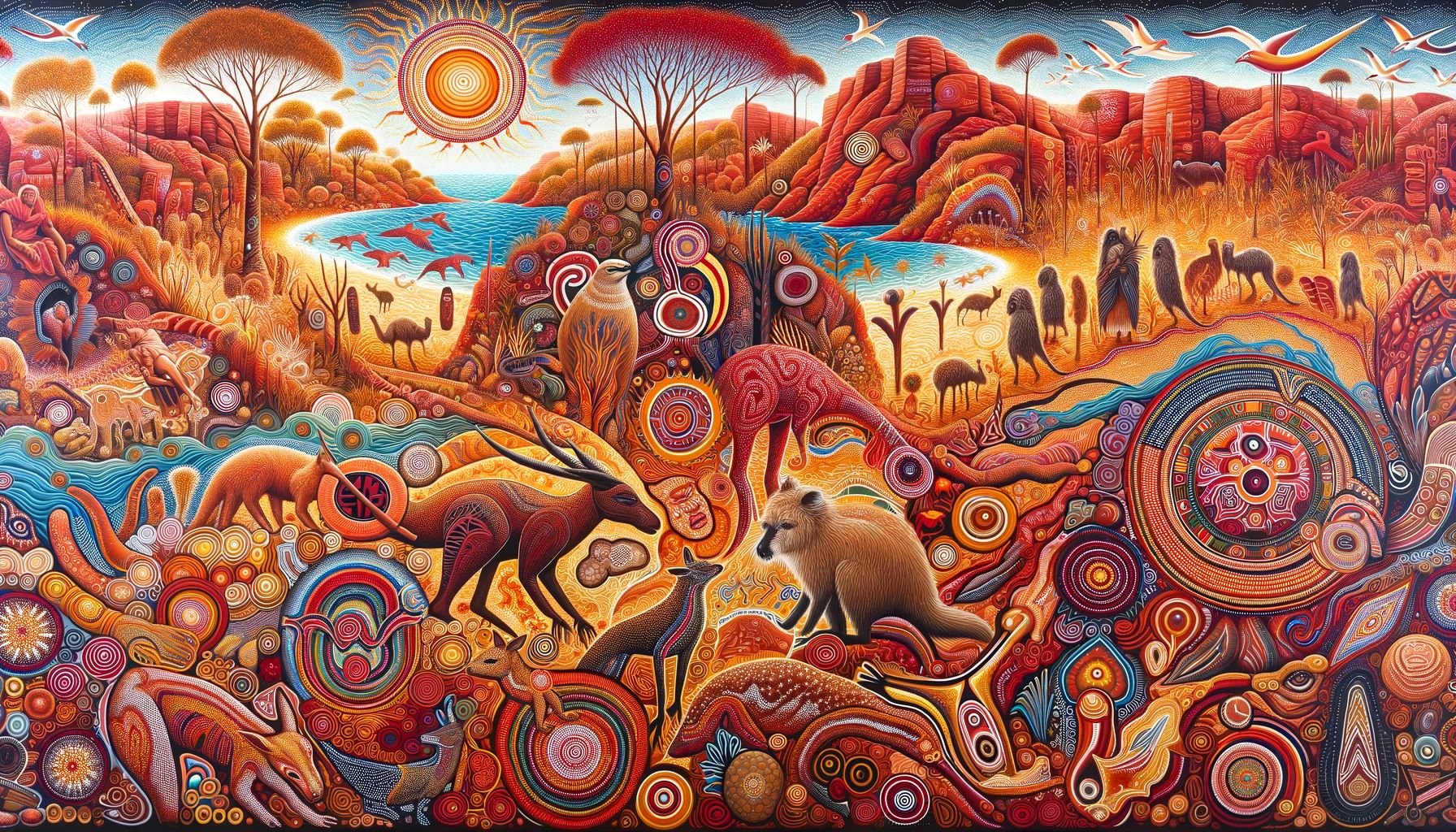Physical Address
304 North Cardinal St.
Dorchester Center, MA 02124
Physical Address
304 North Cardinal St.
Dorchester Center, MA 02124

With a history spanning over 65,000 years, the culture and traditions of the Australian Aboriginal peoples represent one of the oldest living cultures on earth. This article delves into the rich tapestry that is their history, belief systems, art, language, and societal structures.
The story of Australia’s Aboriginal peoples begins with their arrival on the continent more than 65,000 years ago. Archaeological evidence suggests that these first Australians crossed from Southeast Asia during an ice age when sea levels were much lower than they are today. These early inhabitants developed a unique hunter-gatherer lifestyle to adapt to Australia’s harsh climate and diverse landscapes.
Central to Aboriginal culture is a deep spiritual connection with the land, often referred to as ‘Dreaming’ or ‘The Dreamtime’. This complex network of knowledge, faith, and practices encompasses creation stories explaining the origins of the universe and its creatures. Every mountain, river, rock or tree has a story behind it – a spiritual essence born in The Dreamtime.
Prior to European settlement in 1788, it’s estimated that over 500 different clan groups or ‘nations’ existed across Australia each with their own distinct language. Today around 120 of those languages are still spoken regularly. These languages are not just communication tools but also carry cultural knowledge about lore, flora and fauna species, fishing techniques and food preparation.
Australian Aboriginal societies were organised into clan groups that were self-sufficient and governed by complex kinship systems. Elders held authority within clans based on their wisdom and life experience. These societies were highly sustainable, with a deep understanding of the land and its resources. Their hunting and gathering practices were based on intricate knowledge of the environment and seasonal changes.
Aboriginal art is one of the oldest ongoing art traditions in the world. Early forms include rock carvings and paintings, body painting and ground designs, often carrying significant spiritual and cultural meaning. Contemporary Aboriginal art, including the famous dot paintings, continue these traditions using modern mediums while telling ancient stories.
With the arrival of British colonists in 1788 came a drastic shift for Aboriginal peoples. Diseases introduced by settlers decimated populations, while displacement from traditional lands disrupted cultural practices and societal structures. Despite these challenges, Aboriginal peoples have shown remarkable resilience in preserving their culture.
The late 20th century saw significant strides towards recognising Aboriginal rights in Australia. The 1967 referendum allowed for Aboriginal people to be counted in the national census and for the federal government to make laws regarding Indigenous Australians. In 1992, The Mabo Decision recognised native title rights – acknowledging that Aboriginal peoples’ connection to their land existed before European colonisation.
The history of Australian Aboriginal Peoples is a rich tapestry woven with threads of survival, spirituality, resilience, and creativity. It’s a testament to an enduring culture that has survived against all odds through tens of thousands of years. Today’s Australian Aboriginal communities continue to uphold their unique legacy while adapting to contemporary society – ensuring that their ancient culture continues to thrive into the future.